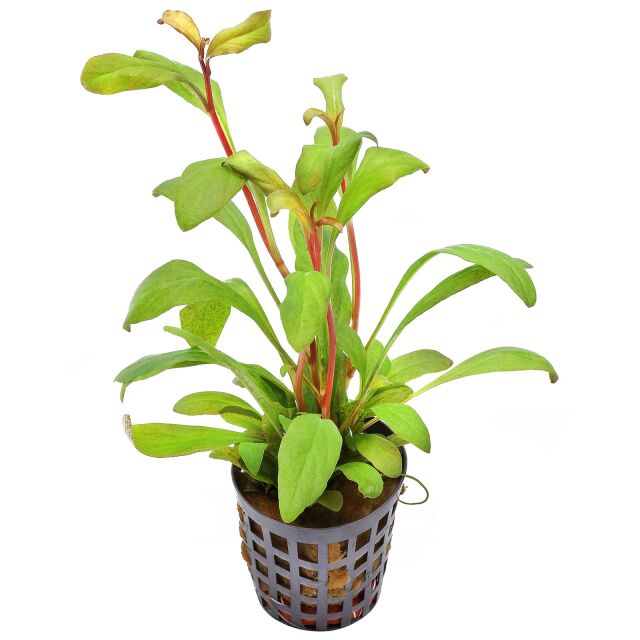Small-leaved loosestrife



Lysimachia parvifolia
Small-leaved loosestrife
- Also known as "Samolus parviflorus 'Red'"
- Novelty from South China
- Striking red-leaved rosette plant
- Not very demanding
- Looks completely different as an emersed plant
Item question
We’re here for you!
Please enter your question and e-mail and we’ll contact you as soon as possible. It usually takes us up to 24 hours during business days to respond.
Thank you for your question!
Thank you, we’ll get in touch!
Close window
You already sent us a question.
Please wait a few minutes
Description
This unusual plant has only been known in the aquarium hobby for a few years as "Samolus parviflorus 'Red'" and has been available privately rather than in the regular trade. It was originally found growing submerged in a river in the limestone region of the Chinese province of Guangxi. The characteristics of the terrestrial form do not match Samolus, but clearly Lysimachia parvifolia, a loosestrife species native to south and south-east China. It occurs in wet places such as stream banks, ditches and rice paddies.
The plant grows more or less broadly rosette-like under water, about 10 - 20 cm wide, with several shoots. In low light, elongated shoots may also appear. In bright light, the leaves are red to dark red in colour, in weaker light with slightly orange tones.
The emersed form looks completely different. The plant then develops flowering shoots about 30 - 50 cm high and many long, runner-like, "flagelliform" side shoots. The emersed leaves are alternate, narrowly elliptical to spatulate, green to slightly reddish and, at around 1 - 4.5 cm long, much smaller than the submersed leaves, hence the name L. parvifolia, "small-leaved". The stem is more or less reddish. Small, white, almost bell-shaped flowers open on upright racemose inflorescences.
Although the "red samolus" is an easy-to-grow plant, it shows the most beautiful red tones with rather strong lighting (PAR radiation of at least 100 micromoles). The addition of CO2 is not absolutely necessary, but, like a nutrient-rich substrate, promotes a more beautiful, lush growth pattern. We have no information on the exact temperature requirements. As the plant originates from subtropical latitudes with hot, humid summers and cool but mild winters, it certainly tolerates a wide range of temperatures. Propagation is by splitting the leaf rosette into single shoots. Roots and adventitious shoots develop from severed leaves floating in water at the point of breakage, as is also known from Hygrophila species.
At present, Lysimachia parvifolia is still a rarity, but as an easy-to-grow, robust aquarium plant it is sure to become more widespread. This Samolus-like plant forms a striking red accent in the aquarium foreground to midground. In its terrestrial form, the plant looks far less conspicuous, but with its hanging to creeping shoots and pretty little white flowers it could provide an interesting accent in paludariums and wabi-kusa.
General information
| Item no. |
|
| EAN | |
| Weight | 0,10 kg |
| Shipping weight | 0,10 kg |
Customers ask customers
You have questions about this product? Ask other customer or our support team about this product!